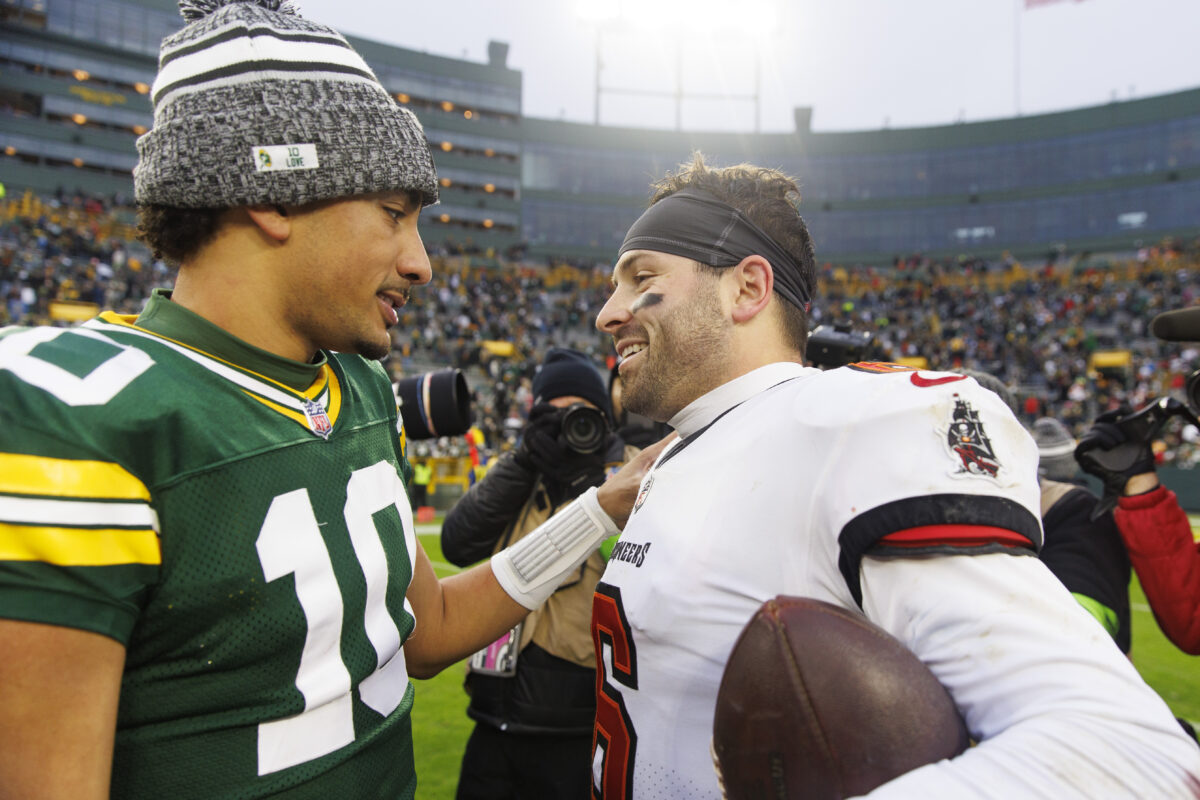Jumps in player compensation is a simple reality in the NFL, but sometimes a new deal comes along that makes a team look like a true bargain hunter. According to NFL Network’s Ian Rapoport, the Miami Dolphins just signed quarterback Tua Tagovailoa to a blockbuster four-year, $212.4 million deal while the Green Bay Packers signed QB Jordan Love to a four-year, $220 million deal per ESPN’s Adam Schefter. All of a sudden, Baker Mayfield’s new deal is looking like an utter steal for the Buccaneers.
Just before free agency began this year, Tampa Bay locked Mayfield into a three-year, $100 million deal with $50 million guaranteed. On average, the Dolphins are paying Tua and Love $20 million per year more than the Bucs are paying Mayfield.
Are Tua and Love really $20 million a year better than Baker?
$20 million is a significant chunk of change. It is what the Bucs are paying Mike Evans and Chris Godwin on average each year. It’s more than what the Packers are paying their entire receiving room in 2024. Paying a quarterback near the top of the market prices means the Packers and Dolphins have less flexibility to pay their other players or bring in high quality veterans.
| Total yards | Total TDs | Total turnovers | Total first downs | Completion % | Yards per attempt | Air yards/pass | EPA/play | |
| Baker Mayfield | 4107 | 29 | 13 | 247 | 66.4% | 7.14 | 8.5 | 0.131 |
| Tua Tagovailoa | 4659 | 29 | 19 | 242 | 71.5% | 8.26 | 7.8 | 0.160 |
| Jordan Love | 4406 | 36 | 14 | 253 | 64.3% | 7.18 | 8.5 | 0.156 |
Tua’s success last season was undeniable, and while his stats might suggest he was among the best quarterbacks in football, a closer look reveals a narrow margin separating him and Mayfield.
Though Tua was certainly a more prolific passer, Mayfield made up for it with his ability as a runner, closing the gap in touchdowns and first downs. Mayfield also had fewer turnovers, in particular committing eight fumbles to Tua’s 13, second-most in the NFL.
There is also the question of Tua’s environment. The Dolphins boast arguably the fastest wide receiver room in the NFL with Tyreek Hill and Jaylen Waddle. Combined with Mike McDaniel’s RPO and play action-heavy scheme, Tua was able to get the ball out faster than any other quarterback, averaging a league-best 2.34 seconds time to throw per Pro Football Focus.
This system largely concealed Tua’s biggest weakness: pressure. Though he was only pressured on 24.9% of his dropbacks, Tua was a much different quarterback when the defense turned up the heat. When pressured, Tue completed just 39.8% of his passes for 5.3 yards per attempt per PFF. Conversely, Mayfield completed 49.7% of his passes for 6.5 yards per attempt under pressure last season.
While Miami’s offense runs like a well-oiled machine with Tua at quarterback, he appears to be more a part of the machine than the person operating it.
Jordan Love is a different story. After a rough start last season, he came alive down the stretch with some of the best quarterback play in the NFL. He too outperformed Mayfield in most metrics, albeit at an even smaller margin than Tua.
However, unlike Tua, there is no inherent weakness indicated in Love’s numbers. Love’s yards per attempt actually went up under pressure (7.3), and he had the best completion percentage of the group (50.3%) when pressured per PFF.
Love also did not have the benefit of a superstar skill group, leading the youngest offense in the NFL last year. The only real risk is that Love has started all of one season. If he does fall back to earth in 2024, Mayfield’s deal will look even sweeter.


